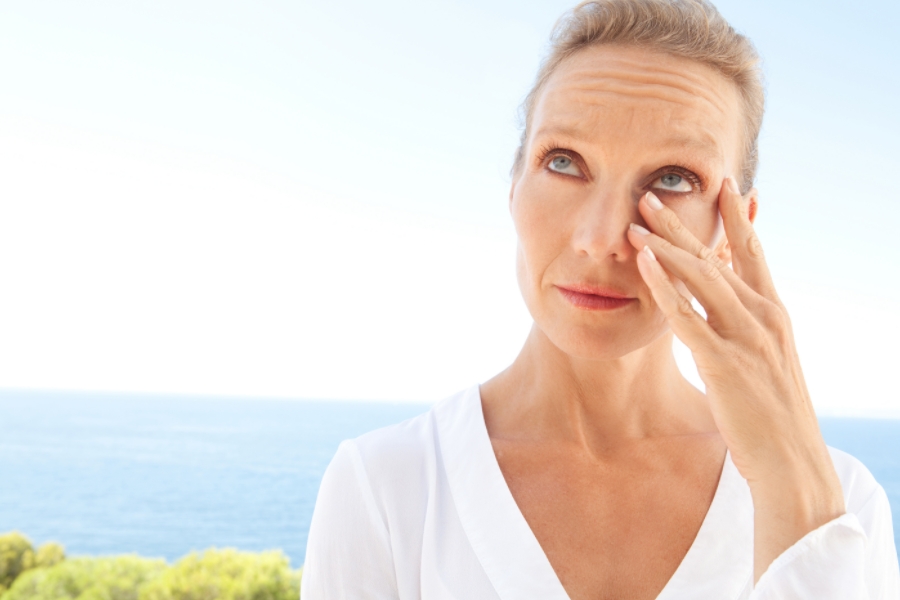Is the menopause affecting your eyes?
Approximately 61% of perimenopausal and menopausal women are affected by a condition called Dry Eye Disease.
In fact, women over 50 are nearly twice as likely to experience the condition compared to men of the same age. This is often caused by a decrease in a sex hormone called androgen, which can impact both our meibomian glands (which secrete oil for tears) and lacrimal glands (which secrete fluid for tears), meaning the eyelids can become inflamed and produce fewer or poorer quality tears.¹
As Dry Eye Disease is caused by the chemistry of your tear film being out of balance, the condition may also be caused by several other factors. These include time spent on screens, wearing contact lenses for long periods of time, being exposed to cigarette smoke, heating, air conditioning as well as certain medications and other chronic conditions – the list goes on!

Despite some people suffering with many of the symptoms, it is a condition that is not widely known, meaning that many of us may be suffering needlessly. Whilst it can be effectively managed, if left untreated it can lead to serious infections and ocular surface damage.
Luckily, there are a number of treatments and simple lifestyle adjustments to help manage Dry Eye Disease symptoms. If a person develops symptoms, they should see an eyecare professional for a diagnosis and treatment plan.
The Eye Experts, Théa UK, have devised a simple eye care routine in four easy steps to help relieve some of these symptoms:

Sarah Farrant, an Optometrist, and member of the Théa EYE (Experts on Your Eyes) panel also recommends the following easy steps on giving your eyes a little TLC:
- Adopt the 20-20-20 rule. For every 20 minutes spent using a screen, look away at something that is 20 feet away for 20 seconds
- If your eyes feel dry, pop your preservative free eye drop, such as Thealoz® Duo Lubricating Eye Drops in your bag and use throughout the day to refresh. You can also use a gel-based eye drop in the morning and night if your symptoms are more troublesome

- Have your eyes tested every two years even if you think your vision is fine (and more often if advised by your optometrist), eye tests can show a lot about your general health too
- Try to avoid car dashboard fans directed at your eyes, smoky atmospheres as well as air-conditioned spaces
- Use a gentle solution to clean makeup off your eyes, such as Blephasol eyelid cleansing lotion
For more information about Dry Eye Disease, visit your Optometrist who will be able to advise you on how to manage the condition. And to find out more about the symptoms and Théa’s products to help treat them, please visit: www.youreyehealth.co.uk
¹ Peck et al. Dry Eye Syndrome in Menopause and Perimenopausal Age Group. Journal of Mid-life Health. 8(2): 51–54. 2017. https://www.ncbi.nlm.nih.gov/pmc/articles/PMC5496280/ – ref4
ADVERTORIAL





















